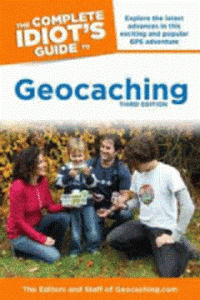What is geocaching?
Geocaching is a game that involves hunting for treasure. There are over 3 million hidden containers called geocaches hidden worldwide just waiting to be found. You can follow the clues to find them using a GPS device (Global Positioning System).
What will I find?
The containers, called caches, can be of all shapes and sizes. Inside, you’ll usually find a log book to sign or initial that you’ve found it. You might also find little toys or baubles called “loot” to keep as a mini trophy. However, it is considered good etiquette to leave something behind if you take something, so there will always be something for future geocachers. But leave the container where you found it! You can also log your finds online through various geocaching sites and apps.
What should I bring?
The best gear a geocacher should have is:
- A GPS device or cell phone with a GPS or Geocaching app installed (make sure your phone is in a protective case in case it is dropped).
- A pen to sign the log book when you find it.
- A couple of small trinkets to replace what you take from the cache.
- Water! Always have water if you’re going on a longer than usual hike.
- A portable phone charger will come in handy as well.
- Sunscreen.
- Bug repellent.
- A first aid kit (especially if you are doing a day hike).
- A backpack to keep it all together.
Geocaching Safety Tips
- Always let somebody know where you’ll be geocaching. If possible, share your location with someone you trust through your phone. Ultimately, you should never geocache alone. There is safety in numbers!
- Have your phone fully charged. Sometimes you will be out of range if you are going to some locations, so be prepared!
- Dress appropriately. Long pants are best, in case you need to climb over rocks or through thorny bushes. Good sturdy shoes like hiking boots are a plus, too!
- Geocache during the day, preferably during dry weather, as some surfaces can be slippery, such as rocks and logs.
How to Geocache
- First you need to find a geocache location. There are multiple places online in which you can search for them:
- Once you find a spot you’d like to search, you’ll have the coordinates.
Coordinates?
A geocaching location is revealed mainly by its coordinates, specifically, latitude and longitude.
Latitude: The horizontal lines that go around the Earth from east to west.
Longitude: The vertical lines that cover the Earth from north to south.
When a latitude coordinate crosses over a longitude coordinate, then X marks the spot!
Like a circular clock, which is divided into hours, minutes, and seconds, the measurement around the spherical earth is also divided into degrees, minutes, and seconds. Each line that you see representing latitude or longitude is 10 degrees and is then broken into smaller segments, minutes and seconds, for more accurate measurements.
One degree of latitude equals approximately 364,000 feet (69 miles or 111 km), one minute equals 6,068 feet (1.15 miles or 1.9 km), and one-second equals 101 feet (30.8 meters).
Measuring starts from two places. The measurement of latitude starts at the equator. Heading north from the equator, each line is increasingly ten degrees farther north, and heading south, each line is increasingly ten degrees farther south.
Take this example:
N 47° 38.938′ W 122° 20.887′
Because the coordinates start with N, we know that this location is north of the equator. Because the first number—which indicates the degrees—is 47, we know that it is 47 degrees, so four and 7/10ths lines of latitude above the equator. The next numbers are 38.938. This is a further precision of the measurement into minutes and seconds, meaning this location is 38 minutes and .938 x 60 seconds (almost 1 minute) farther north. (source)
The Search Begins!
If you are using a GPS device or a phone with a GPS app (mapquest, Google Maps, WAZE, etc.), enter the coordinates into the device.
Let’s try an example:
38°37’08.9″N 76°55’59.8″W
Want to learn more about geocaching? Check out these materials:
The Complete Idiot’s Guide to Geocaching
3rd ed. / by the editors and staff of Geocaching.com
The editors and staff of Geocaching.com take the reader through all of the core essentials for caching including how to play, tips and tricks for finding and placing caches, variations on traditional caching, and much more. In addition, the reader can learn about exciting new changes to the game and the new GPS-enabled games that will take cachers to an entirely new level of fun and adventure.
The Joy Of Geocaching by Paul Gillin, Dana Gillin
How to Find Health, Happiness and Creative Energy Through a Worldwide Treasure Hunt
Describing the exciting and adventurous world surrounding geocaching–a worldwide hunt in which treasures are located using global positioning system (GPS) devices–this book offers an understanding and application of the principles and best practices of the game. What’s different is that the authors wrap this knowledge in a tapestry of human stories that range from hilarious to touching. Paul and Dana Gillin interviewed 40 of the world’s 50 most prolific geocachers as well as experts in container design, “extreme” geocaching and other dimensions of the game. They tell how this global activity inspires passion that has helped people heal frayed marriages, establish new friendships–and even save lives.
Cool Maps & Geocaching by Katherine Hengel
Great Things to Do in the Great Outdoors
Part of the Cool Great Outdoors series
Cool Maps and Geocaching makes the great outdoors fun and exciting. Learn the fun of geocaching. What to put in a secret cache, where to hide it. Create your own compass to find a cache and write in an adventure journal. This book is full of easy-to-follow steps and bright photography for every activity. Plus, it’s written just for kids! Aligned to Common Core Standards and correlated to state standards. Checkerboard Library is an imprint of Abdo Publishing, a division of ABDO.









